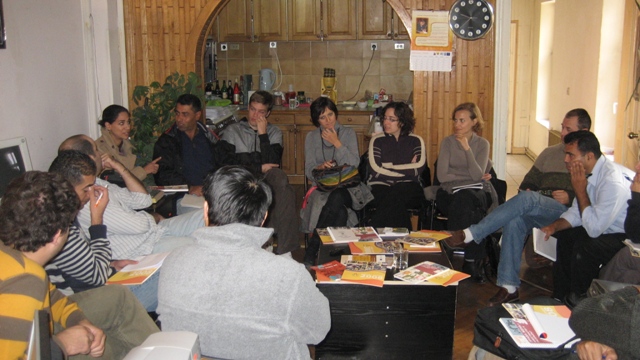As the May 15th marches reaffirmed the refugees at the center of the Palestinian struggle and revealed new avenues for the realization of their rights, questions related to practical aspects of refugee return are becoming of increasing significance. Over the past two years, BADIL and Zochrot have been involved in an innovative project to study the practical aspects of refugee return. The project builds on the deep respect in international law for the right of return,1 and its widespread affirmation as the only acceptable durable solution, and starts to address how refugees will return to properties and homes from which they were forcibly displaced, and how such a return can be implemented in a practical, fair, and efficient manner that protects the legitimate interests of all stakeholders involved. This document reflects the ideas and suggestions raised by participants over the course of two seminars held in Belgrade (October 2009) and Istanbul (December 2010) and represents the initial, tentative thoughts of the group. It should thus be read as the early beginnings of a fruitful discussion on the issue. Presenting the possibilities of return. The practical aspect of return is an important project for a number of reasons. For Palestinians, return is an inalienable right often viewed as a 'dream', which over time has attained a certain mythical status. Whilst viewing return in this manner is the understandable response of a people who have been struggling for their rights for the past 63 years, this has often come at the expense of a realistic, sober assessment of how Palestinian refugee return is to be practically realized. Consequently, many exiled Palestinians visualize the homeland to which they will return as the idyllic pre-1948 Palestine they know from grainy photographs. The practicalities of return project encourages Palestinians to envisage their return to a living place in which the tragedies and crimes of the past will need to be reconciled with the possibilities and hopes for the future. Both the dream, and the disappointment of return, can be mitigated by drawing a positive vision for how return might look and involving Palestinians in an interactive process which draws them into mapping their own lives. Looking at and discussing how to reclaim spaces from which Palestinian have been excluded for so long reinvigorates the resolve to struggle by giving a clearer picture of what is currently being fought for; equality, return, freedom and justice, and how these noble ideals will look in the real world. In Israel, despite the impact of Zochrot's work and the revelation made by the New Historians which verified Palestinian accounts of the Nakba, the Palestinian right of return continues to be considered a synonym for “the destruction of Israel” and stirs up deep-seated fears among Israelis about their future. Whilst this view predominates as a result of a system of entrenched racism against Palestinians derived from the Zionist impulse towards forcible transfer, there nevertheless exists legitimate concerns among the Israeli public about the implications of Palestinian refugee return. These fears can only abate if Israelis have an understanding of how their lives, properties and privileges will be affected by the repatriation of Palestinian refugees. The project aims to show this audience that refugee return, as well as being legal and just, can also be achieved in a manner which also takes into account the rights of the existing receiving communities; thereby moving the focus from prejudiced assumptions to a reasonable discussion on the practical aspects of refugee return. Finally, one reason why the process of refugee repatriation, rehabilitation and restitution has not been successful in comparative refugee return situations is the failure to make preparations for return in advance. As such, the process of establishing a just and efficient process was rushed leading to administrative delays or hurried solutions which failed to address the source of the injustice, negatively affecting the transition to a just society. By considering this process in advance, we hope to outline the principles from which, when the correct circumstances exist, fair processes and mechanisms for refugee return can be established. Transitional Justice: Recognition, Responsibility/Accountability and Redress Transitional justice lacks a universal definition. However, for the purposes of the workshops, transitional justice was defined in broad terms as “the way societies deal with their past (and present) moving from a repressive regime to a democratic one based on recognition, responsibility (accountability) andredress.”2 Recognition Recognition is the first component of transitional justice. In the case of the Palestinian-Israeli conflict, this relates to recognizing and acknowledging the ethnic cleansing of over 750,000 Palestinians in what is known to Palestinians as the Nakba, or catastrophe, of 1948 as well as the ongoing displacement and dispossession as a result of Israel’s regime of occupation, colonization and apartheid, involving numerous levels of crimes and violations. These include direct violence and massacres as in the cases of al-Tantoura and Deir Yassin, direct expulsion as in the cases of Lydd and Ramla and acts of psychological warfare. Official recognition of the crimes that took place would be the minimum required step towards a new chapter in a post-conflict society. This could take the form of a public apology but would also have to be complemented by other measures including changing back street names, renaming parks, public squares, etc, making relevant documents and records public and accessible, granting symbolic privileges and benefits to victims and their descendants (free transportation to historic sites, ex officio membership in organizations commemorating their suffering, etc.); and teaching the history of the Palestinian Nakba in schools. However, whilst official recognition is essential, it is not in itself sufficient and must be accompanied by public and private recognition by civil society, specifically by leaders of the Jewish community in the state. More problematic, however, is achieving recognition on an individual level because one cannot bring others to recognize something by force if they choose not to. At the same time, it would be intolerable for victims of the former repression to live alongside a large segment of Israeli people who refuse to acknowledge the former injustices of their elected government. Such a situation would render meaningless any recognition by the government and/or civil society and would provide fertile ground for the reemergence of past patterns of injustice as those Israelis who deny the historical injustice become a source of unrest or even relapse. Responsibility/Accountability Responsibility relates to holding to account those who were responsible for the Nakba and the ensuing crimes. Documentation from human rights organizations, oral history accounts, and Israeli archives would be instrumental in uncovering the facts of what happened in and since 1948 and provide information which identifies crimes and perpetrators. Perpetrators could include individual leaders, governmental and parastatal officials (e.g. JNF) as well as businesses and war profiteers. Perpetrators could be brought before a criminal or a civil court, depending on the severity and nature of the crime. The legal justice mechanisms for prosecuting those responsible would need to explore the supportive role that might be played by international organizations as justice venues and would be based on an assessment of other transitional justice situations and the unique characteristics existent in Palestine. Where appropriate, purging officials and civil servants who took part in mass human rights violations and banning them from assuming public office for the rest of their lives might be one aspect of the mechanisms for holding such persons responsible for their crimes. Next to this, community-based forms of Accountability and Alternative Dispute Resolution Mechanisms (ADRM) in which the community finds creative solutions for addressing (normally low-level) historical crimes or injustices could be required. One example from the Timor-Leste experience involved a former pro-Indonesia militia member who was involved in destroying a local school being asked to rebuild it and provide his home as a temporary location for the school as a means of reacceptance back into the community. In Palestine, one such example might be built upon the Bedouin tradition of Atwah with a “Diwan al-Musalaha/ Diwan of Reconciliation” providing a forum for victims and perpetrators to reconcile their disputes. However, the Diwan of Reconciliation should not substitute other mechanisms of formal justice and accountability and recognition of crimes should not come at the expense of effective responsibility. An important lesson in this regard was learned from the South African model of Truth and Reconciliation Commission (TRC). Redress Redress relates to restoring the situation to pre-1948 conditions wherever possible, and to making victims whole. This includes, inter alia, implementing the right of refugees to return to their original homes wherever possible, financial compensation, social rehabilitation, disarmament and demilitarization. Redress should take an economic form in addition to a legal form to avoid creating a situation where the segment of the society which profited from repression remains privileged in the new society while the victims remain economically marginalized. Restitution The mandate of the restitution group was to look at the practical considerations of return as it relates to the restitution of property for Palestinian refugees. Restitution was defined as returning an individual’s property to them, as a step to reverse the injustice caused by the displacement and deprivation of property rights. Restitution is the primary remedy under international law for property that has been arbitrarily confiscated. A set of principles would be necessary to identify how conflicts over property would be resolved and how restitution should work if individual rights conflict with public institutions or company-owned property. As part of the group's deliberations it was discussed that priority should be given to avoiding harm to individuals therefore giving priority to individual property claims or to property used for public institutions. Restitution includes physical return of properties confiscated as a result of Israel's theft as well as a package of compensation to those choosing not to have their property restituted. In order to do this, there is a need to collect funds from all responsible parties, principally Israel, but also the United Kingdom and others. These funds will be used in cases where compensation will be given as a remedy either in addition to, or instead of, restitution. If a refugee chooses compensation over restitution this should be the full value of the property which should be calculated according to a formula based on UNCCP and other records that will provide the present value of the property. Mechanisms and Processes Mechanisms for achieving restitution would include engaging community elders, scholars, civil society organizations in mapping the area before 1948; utilizing Ottoman, British, Israeli, and other relevant archives, testimonies/documents from refugees and aerial photographs. Such a function might be best served by the establishment of local committees, representing each sector of the returning Palestinian communities to represent the community demands in terms of public space. These committees would play a significant role in identifying land claims and establishing ownership; a task the complexity of which should not be underestimated given that one would need to identify who owned which land, how they came to acquire it, i.e. was it a result of colonialism or other illegal acquisition methods, who actually used the land and, if the land was 'sold' whether it was done so under duress or pressure. In this sense, property restitution would also be focused around ensuring that the restitution process provides historical justice. When secondary property rights conflict with Palestinian rights According to research by Salman Abu Sitta, the majority of Israeli-Jews live on an area similar in size (if not in exact location) to the area inhabited pre-19483. Therefore, in most instances, a direct conflict of rights over property is unlikely to arise. However, there will be cases where property belonging to a Palestinian refugee is currently occupied by secondary occupiers and these must be resolved ensuring justice for both communities and minimizing the negative impact on both. Factors to be considered in establishing the criteria for resolution include the passage of time and the circumstances of acquisition. One option might be to offer monetary compensation for whoever was willing to surrender their claim to the property. Alternatively, in cases where an Israeli is leasing land from the state, the option of continuing the lease until it is completed but from the Palestinian owner might be also offered. If neither of these solutions is accepted, the decision will be referred to a judicial body with the jurisdiction to decide on the case. Rehabilitation and Creating a Culture of Return Rehabilitation is a healing process for the Palestinian and Jewish communities aiming to make these communities sustainable before and after return. Rehabilitation has both physical and psychological dimensions to it, and also connected to the rehabilitation of Palestinians who choose not to return. In the process, it is necessary to think about how to reconstruct a new reality rather than moving into a pre-existing landscape - whether it is present day Israel and/or an idealized pre-Nakba one – and should be aimed at ensuring that present day ethnic, economic and national distinctions are not reproduced. Planning for rehabilitation and creating a culture of return are activities that could be initiated both in an ideal, post- conflict society, and in the present political climate as a means of public advocacy. A public educational campaign would need to be launched to show the ways in which Israelis and Palestinians living together would be made possible. An example of such education initiatives is Zochrot's existing work program which raises awareness of the Nakba within Israel, explains the present situation of refugees and their right to return and acknowledges ethnically-cleansed villages through signposting, tours, lectures and so forth. This could include reconnecting Palestinians with their villages by showing films and photos of villages as they existed and as they currently exist as well as creating public spaces in which return can be understood (such as the creation of fictional movies portraying return, or art/architectural school projects which encourage imagining of the return). This could be combined with civil disobedience involving active return by Palestinian refugees and other initiatives by BADILand the marches of return4. In this regard, every march of return, practice of memory and visit to destroyed villages will become an active preparation for return. When the current Apartheid regime ends and Palestinian refugees are allowed to return, the process of rehabilitation itself would need to be conducted in a manner which places community consultation as a high priority and allows space for the community to collect and develop its demands. This would include visits by representatives to the villages to gather information (for instance regarding what has occurred in Palestine and in the original villages since the Nakba) that would assist in calibrating the expectations of the returning refugees and assisting them in making informed choices. Rehabilitation will include the development of educational curricula, economic models and plans, social, cultural and gender agendas, national symbols, religious matters and proposals for a legal system. On a more grassroots level, it will involve working to empower repatriated communities, through start-up funds and resources such as micro-finance loans, agricultural lands, skills-building trainings and legal tools such as affirmative action and non-discrimination legislation. Where necessary, public spaces should be turned into open and welcoming spaces and a Nakba museum could be established. When colonization comes to an end, military bases can transfer to civic use, making space for building homes. Rehabilitation also includes rehabilitation of Jewish-Israeli communities. They could be provided with Arabic courses and asked how they would like to live with their new neighbors, ensuring a democratic and multicultural education, and rehabilitation of those involved in the conflict (demilitarization, etc.) This aspect of rehabilitation would be designed with the objective of liberating the minds of the occupiers, a process which may also include affording Jewish Israelis the possibility to return to their countries of origin. Conclusion The project on the practical aspects of return remains at a preliminary stage of discussion. As the project progresses, the need to include individuals from the communities in question becomes ever-greater in order to ensure that the process is legitimate and includes the views of those whose lives it effects. Durable solutions for refugees can only be brought about by the inclusion of refugees in formulating the mechanisms through which it is to be facilitated and, ultimately, by them choosing which solution to displacement is most suitable for them and their families. As such, and given the long history of Israel, UN and Arab attempts to impose solutions on Palestinian refugees, we emphasized that the discussions in our seminars amounted to no more than our personal efforts and suggestions with the substance of the project only being legitimated when the project is discussed and endorsed by Palestinian refugee communities themselves. In order to facilitate this, the next stage of the project of the BADIL and Zochrot's joint action will be to develop the above ideas in relation to a specific locality and in consultation with refugee communities and receiving communities in order to present a preliminary, tentative plan for refugee return to the Tel Aviv –Jaffa area. This plan will be the basis for a discussion in both communities and will be subsequently developed in consultation with the wider communities in question as well as relevant experts. --------------------------------------------------------------------------
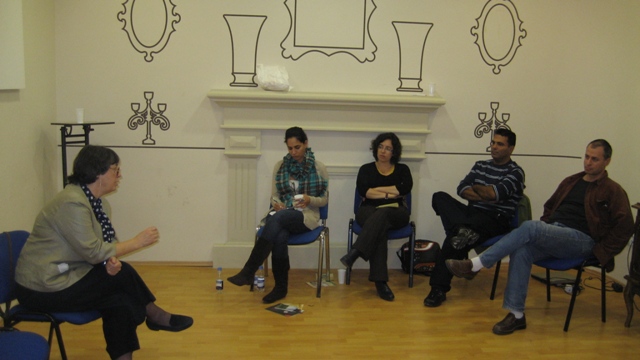
Zochrot & Badil study tour in former Yugoslavia/ Oct. 2009
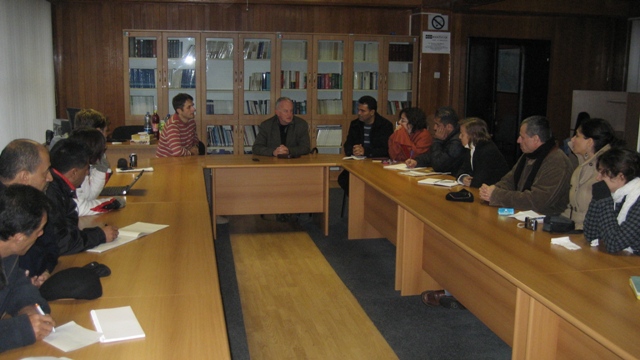
Zochrot & Badil study tour in former Yugoslavia/ Oct. 2009
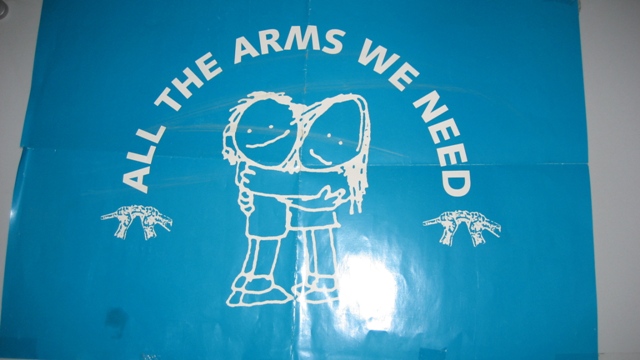
Zochrot & Badil study tour in former Yugoslavia/ Oct. 2009
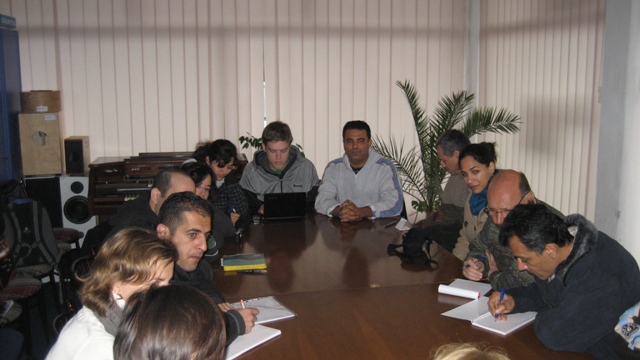
Zochrot & Badil study tour in former Yugoslavia/ Oct. 2009
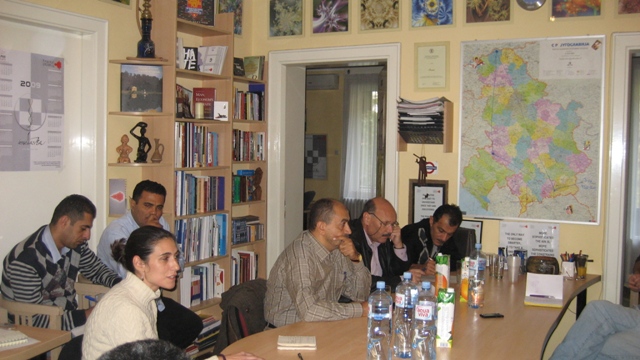
Zochrot & Badil study tour in former Yugoslavia/ Oct. 2009
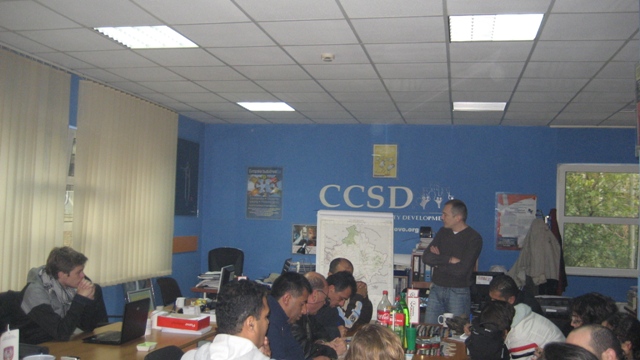
Zochrot & Badil study tour in former Yugoslavia/ Oct. 2009
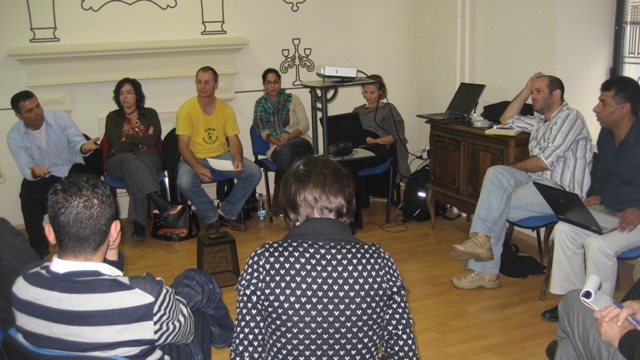
Zochrot & Badil study tour in former Yugoslavia/ Oct. 2009
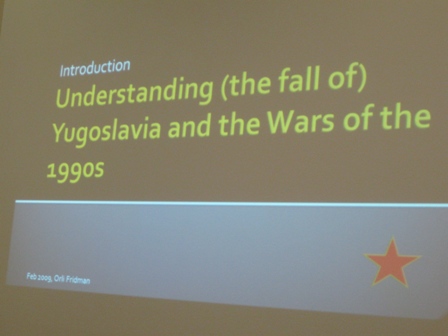
Zochrot & Badil study tour in former Yugoslavia/ Oct. 2009


